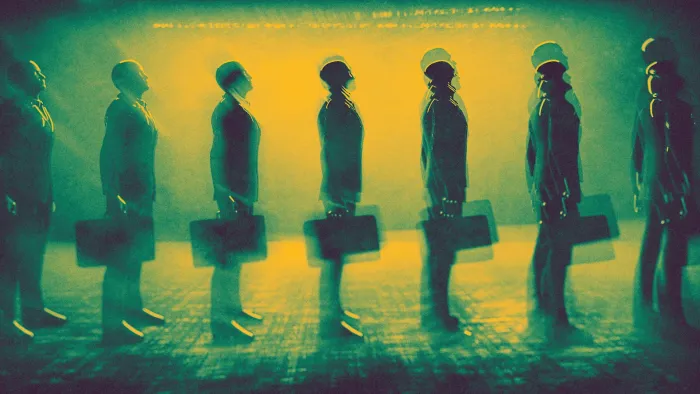
.
Image: Getty Images
Since our return from Davos, Switzerland, earlier this year, we have been dissecting the World Economic Forum’s Future of Jobs Report 2025. The WEF surveyed more than 1,000 companies from 22 different industries across 55 countries to attempt to predict and paint a picture of what work will look like in 2030.
The encouraging news is that there are projected to be 170 million new jobs globally by 2030; however, 92 million jobs are expected to be eliminated due to AI automation. That is a net gain of 78 million jobs by 2030. To get a true understanding of why and how this shift will occur, here is a look at the story beneath the story.
Four disruptive forces driving the next chapter of work stood out in the WEF report:
Every technological revolution—from electricity to the internet—sparked fears of obsolescence. But each wave created more jobs than it destroyed. Take the internet: In the 1990s, critics predicted a massive increase in unemployment and economic destruction. Today? The commercial internet alone supports 28.4 million jobs and drives 18% of the United States’ GDP.
It created new career paths that didn’t exist before, like social media managers and DevOps engineers. Whole industries were created: software-as-a-service (SaaS) companies, cloud computing, e-commerce platforms, and the creator economy. Every technological advancement in history has led to a net increase in employment.
AI is following the same pattern, and we’re at the edge of the job creation phase. Consider the rise of ChatGPT. Behind every AI tool is a multidisciplinary team of humans.
Machine learning engineers designed and implemented the algorithms. Data scientists and data engineers cleaned, curated, and labelled massive datasets. AI ethics experts are working to ensure responsible and fair AI use. Infrastructure architects built the cloud systems that scale these models globally. Every AI tool you use requires dozens of specialists to make it work. The more AI gets deployed, the more humans we need to build, maintain, and improve these systems. It’s continuous work that requires human expertise.
As organisations navigate these times of change, there are multiple areas in which they should focus.
To best prepare for the future and set a company up for growth, they must start building a deep team that relies heavily on big data specialists, AI and machine learning engineers, fintech developers, software engineers, and environmental and renewable energy specialists.
Conversely, some roles will decrease significantly in number or disappear altogether. If there are people at a company who hold these roles, they need to be reskilled or upskilled if there is a desire to save on recruiting and training costs.
Administrative assistants can be almost completely replaced via AI for handling scheduling and initial call response. Accountants and auditors at the entry to mid-managerial level can be replaced by software and AI.
Additionally, graphic designers who create emails, internal and external company documentation, and presentations will also be phased out. Upskilling or reskilling is crucial for individuals currently in those roles.
In the World Economic Forum report, employers anticipate that 39% of workers’ core skills will change by 2030. Essentially, the tasks you were hired to do, and the skills you possess that qualified you for and secured your job, may become obsolete in five years.
So what skills are rising in demand? Think of technical skills like proficiency in AI and big data, as well as cybersecurity. No matter the industry, the future will favour those who can think critically, collaborate effectively, and learn continuously to solve problems.
AI will continue to automate repetitive and mundane tasks, so AI and automation will almost exclusively handle frontline traditional grunt work. In these times of generational workforce shifts, the talent and skills of resilience and adaptability will become increasingly necessary to maintain relevance and demand for your services.
To envision what new jobs will be created, you need to think about the problems and challenges that will be created by increased reliance on AI. AI will create more than it replaces, albeit in different roles and skill sets. As digital transformation continues to accelerate, companies will begin to staff up in roles such as software developers and UX designers, focusing on individuals who possess the skills to bridge the gap between technology and the businesses’ needs.
As medical science advances, the life expectancy of the population continues to increase, which is expected to drive demand for careers in healthcare, particularly in eldercare. As the population ages, the demand for doctors, nurses, and in-home caregivers will increase.
This is the way of things. Environmental, social, and governance (ESG) compliance, experience design, and supply chain resilience were not recognised as distinct job categories 10 years ago. What new jobs will exist and be in high demand over the next five to 10 years?
Unless you plan to retire within the next 18 months, you cannot rest on your current skills. AI and automation will likely displace some jobs, possibly including yours. But massive opportunities will open for people who are willing to adapt. Be a student of your industry and develop an understanding of how it is evolving. That will put you in a position to increase your skills and remain a vital part of your field.
Individuals’ futures are in their own hands. We all have to ask ourselves: Will I let the future happen to me—or will I create it?
ABOUT THE AUTHORS
Mark Minevich is president of Going Global Ventures, a New York-based investment, technology, and strategic advisory firm. Minevich is also a strategic advisor to Mayfield, a leading VC in Silicon Valley.
Navin Chaddha is managing director at Mayfield, a leading venture capital firm. He has been named to the Forbes Midas List of Top 100 Tech Investors sixteen times.
